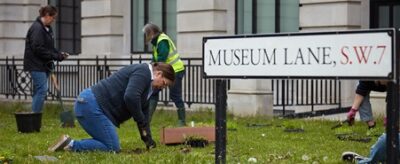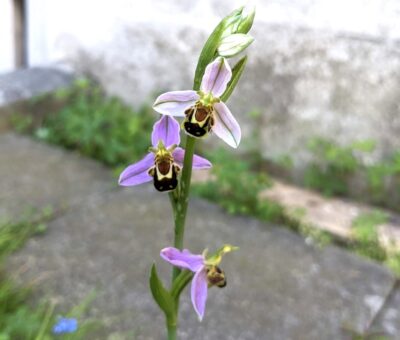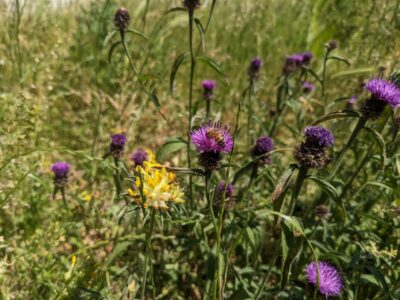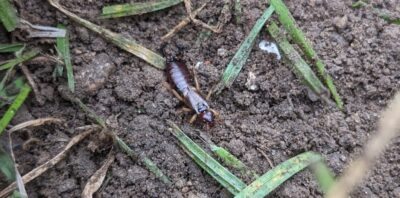Sitting between the Natural History Museum and the Science Museum, it’s the back goods entrance, perhaps too small and rarely used to merit even a name.
For a long time on either side of Museum Lane there were two scruffy patches of lawn, tiny pieces of green struggling against the concrete jungle. But look now and the area is transformed – still perhaps scruffy looking, but a bit of nature taking hold right in the heart of urban South Kensington.
As the smallest part of the Natural History Museum’s Urban Nature Project, these tiny patches have been planted up as a meadow – a place for wildlife to begin to thrive and for scientists to look at how nature recovers in the middle of cities.

As the COVID-19 pandemic slowed down, staff from the Natural History Museum planted the area with wildflowers native to the south of England, then watched and waited to see what would take hold. What a joy to see orchids and kidney vetch begin to grow, along with thistles and grasses. Springtime in a meadow, however small, is a riot of diversity.
This tiny area is home to the plants but is also a place for pollinators – not just bees, but flies and wasps too– who visit the flowers in search of nectar and pollen to nourish their broods. Other insects too shelter in the vegetation, ladybirds and other beetles have taken up residence. The grassy meadow area might look pretty uniform to us, but to an insect it presents a highly complex environment in which to hide and thrive.

When summer is over though the plants begin to die back, flowers are replaced by seed heads and leaves turn brown. Now the meadow looks like no one cares for it and perhaps even like there is nothing at all happening, no life. But appearances are often deceiving!

In the tangles of drying grasses and thistle heads birds come to eat the seeds, insects are bedding down for the winter and life beneath the vegetation is still active. There in the soil tiny springtails, earthworms, fungi and other microorganisms are living their lives, unseen and unheeded by most of us.

Nature changes all the time. Through the ages as evolution by natural selection shaped the diversity of life on Earth and through more recent time as we human beings alter the planet to meet our own needs. Change also happens on a seasonal scale – summer ends and autumn, with its falling leaves and crisp evenings begins. Winter follows, where all appears to be waiting for spring again.
Here in the temperate zone nature follows these cycles, and our meadow on either side of Museum Lane does the same. Leaving the area to follow the seasonal changes allows for nature to come back and establish, creating a haven for the creatures that might otherwise be cleared away in the effort to tidy the place up.
Here is where the science of nature comes in. As part of the Urban Nature Project, and the Urban Nature Movement being started from it, scientists at the Natural History Museum will be monitoring how biodiversity changes as the area is restored, but also through the seasons.
Traditionally, naturalists have looked at the easy-to-see things like plants or butterflies or birds, but today technology allows us to look beyond – using acoustic tools bird and insect activity can be measured round the clock, and DNA sequencing means we can monitor the unseen world of the soil.

You might ask how monitoring such a tiny space can make a difference? But that tiny space on Museum Lane is just the smallest part of the broader area of the Natural History Museum Gardens and including it as part of the wider study will let us see how nature in spaces of different sizes recovers. We are at the beginning of a journey studying the science of this urban nature.
Fitting then that this spot sits between two museums – the Natural History Museum and the Science Museum. For the two are inextricably linked, and both are needed for society to create the world we wish to see for the future. One where we use the tools at our disposal to protect and care for our planet, and to create engaged and active advocates for its future.
Thanks to Sandra Knapp, Tom McCarter and John Tweddle from the Natural History Museum for writing this blog post.